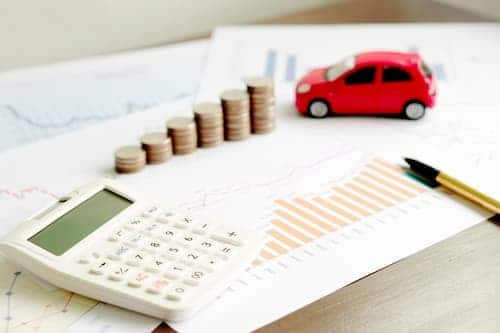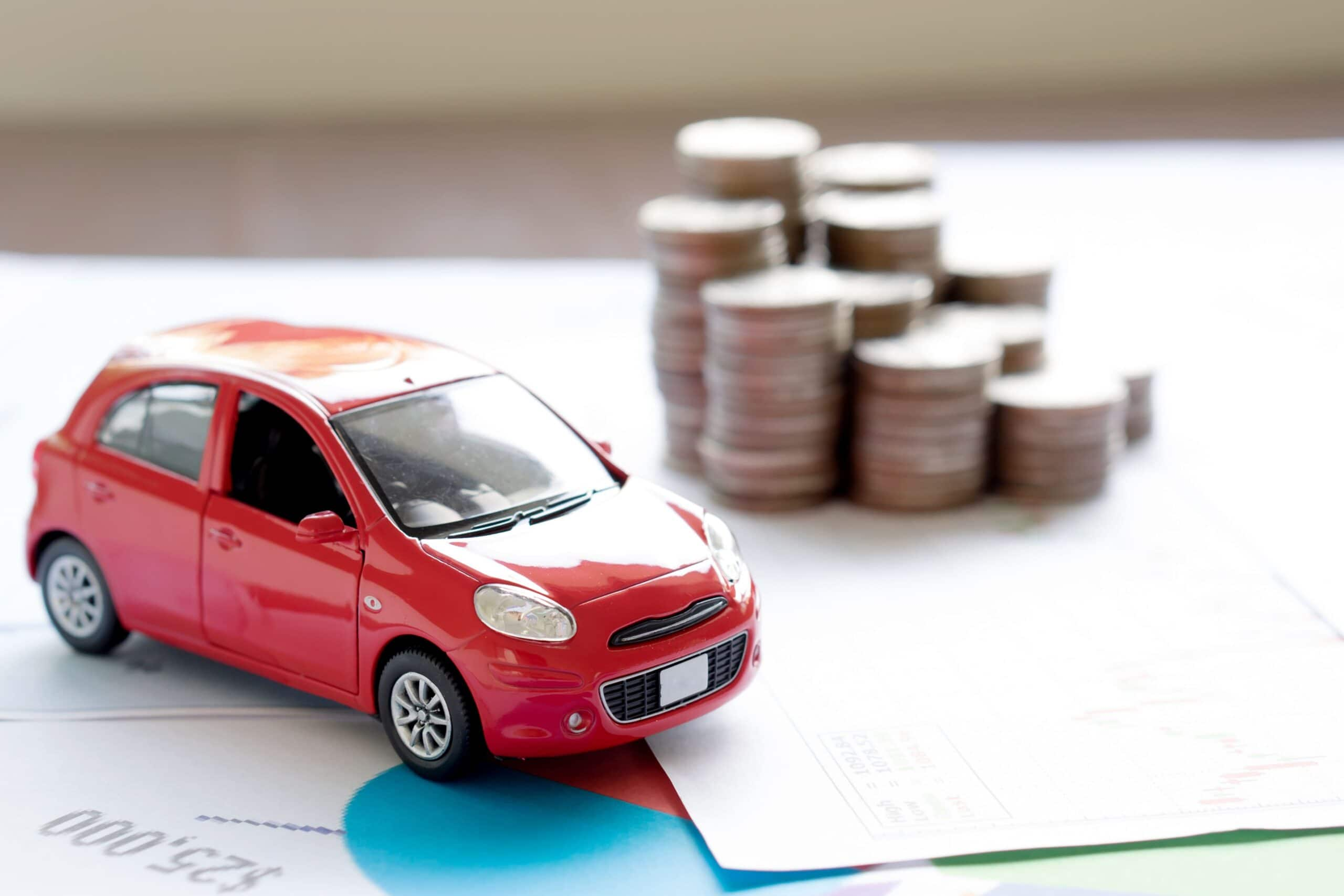- What is uninsured/underinsured motorist coverage?
- What does uninsured motorist coverage cover?
- How much does uninsured motorist insurance cost?
- How does uninsured/underinsured motorist coverage work?
- Do I need uninsured motorist insurance?
- Are uninsured motorist and uninsured motorist bodily injury coverages required?
- How much uninsured motorist coverage do I need?
- What does uninsured motorist insurance cover in a hit-and-run?
- Stacking uninsured motorist and uninsured motorist bodily injury insurance
What is uninsured/underinsured motorist coverage?
Uninsured/underinsured motorist coverage (UM/UIM) covers the bills when an uninsured or underinsured motorist causes an accident. It's an optional coverage in some states and required in others.
Your insurer may sell underinsured and uninsured motorist coverage separately, or they may be combined as uninsured/underinsured motorists. State law affects how this coverage is sold.
An uninsured person has no car insurance or insurance coverage that doesn't meet state-mandated minimum liability requirements. Uninsured coverage may also come into play if the other driver's insurance company denies their claimAn insurance claim is a request you make to your insurance company for coverage after your car is damaged or you have an accident. You can file a claim online, by phone, or in writing. or can't pay it. A hit-and-run driver also counts as uninsured regarding bodily injury, though not normally for property damage.
Underinsured drivers may have minimum insurance required by law, but not enough to cover the damage they cause in an accident. For example, California only requires drivers to carry $15,000 per person and $30,000 per incident of bodily injury liability coverageThis auto insurance coverage helps pay for medical expenses and lost wages if you injure someone in a car accident. It also covers legal fees if you're sued. and only $5,000 in property damage liability. A driver carrying these limits meets the legal requirements but won't have enough coverage if they cause a serious accident. A driver with coverage above the legal limits is underinsured if the bills from the accident exceed their coverage limits.
People ask
Do I need uninsured motorist coverage if I have collision and comprehensive coverage?
While there is some overlap between what collision coverageCollision coverage helps pay for repairs or replacement of your car if it's damaged in an accident, regardless of who is at fault and is subject to a deductible. and uninsured motorist cover, only uninsured motorist provides bodily injury coverage when you are struck by an uninsured driver.
What does uninsured motorist coverage cover?
If you are involved in an accident where the at-fault driver lacks adequate liability insuranceLiability insurance covers sums that an insured becomes legally obligated to pay because of bodily injuries or property damage, or financial losses caused to other people., your uninsured/underinsured motorist coverage will kick in to cover your expenses.
There are two types of uninsured/underinsured motorist coverage:
- Uninsured motorist bodily injury coverage
- Uninsured motorist property damage coverage
The first covers injuries, and the second covers property damage. If you carry both, then you'll have protection for both medical bills resulting from an accident with an uninsured or underinsured driver and the damage they do to your car or property.
How much does uninsured motorist insurance cost?
Costs vary, but UM/UIM coverage is generally very affordable. It typically costs roughly 5% of your annual auto insurance premium. For example, if an annual auto insurance premium costs $800, adding UM/UIM insurance will run about $40 annually.
The best way to see what UM/UIM insurance will cost you is to compare car insurance quotes from several companies.
How does uninsured/underinsured motorist coverage work?
To illustrate how uninsured/underinsured motorist coverage works, let's take the hypothetical example of a driver we'll call Jade.
Jade lives in Arizona, where the state minimum liability limits are 25/50/15, but she carries uninsured/underinsured motorist coverage equal to her liability limits of 100/300/100.
Jade's car is sideswiped by another vehicle and she crashes into the median. She's lucky to sustain only minor injuries, but her $45,000 car is a total loss.
The other driver carries only the state minimum, which means their insurance will only pay a maximum of $15,000 for Jade's car.
She files a claim against her underinsured motorist coverage, which pays the balance of her car's value. Without UIM insurance, Jade would have been out of pocket by $30,000.
This may differ if you're dealing with an injury claim, especially in a no-fault state where your personal injury protection (PIP) will apply first to your medical bills.
If the other driver has no insurance at all, however, you will need to work solely with your own insurance company for an uninsured motorist claim.
In states offering uninsured or underinsured motorist property damage coverage, consumers may have the choice to buy UM insurance as a split limit or combined single limit policy.
- Split limit plans have separate coverage levels for UMBI and UMPD. For example, they may be written as $50,000/$100,000/$25,000, providing coverage of $50,000 per person, subject to a maximum of $100,000 per accident for bodily injury and 25,000 for property damage.
- Combined single limit plans are offered in a small number of states, where one coverage level can pay for both UMBI and UMPD. For instance, a $100,000 policy will pay for up to that amount of UM claims, regardless of whether or not they are related to bodily injury or property damage.
Combined single limit policies are more flexible, but split limit plans may be less expensive.
People ask
Is there a deductible for uninsured motorist?
Sometimes. It depends on your state and your insurer. In some states, there is no deductible, while in others there is a deductible, but the state limits how much it can be. Additionally, insurance companies may have their own guidelines for deductibles.
How to file an uninsured/underinsured motorist claim
If you have been in an accident, even if you think the other party is at fault, you should immediately call your own insurance company. Filing a claim with your insurer for the accident is the first step to using your uninsured or underinsured motorist coverage.
Until the full cost of the damages is known, you won't know if the other driver has enough insurance. However, if they have no insurance, your insurer can take steps right away to process an uninsured motorist claim.
People ask
What is the difference between uninsured and underinsured motorist coverage?
The difference between UM and UIM is when each coverage applies. Uninsured motorist coverage pays when you are struck by another driver with no insurance at all, while underinsured motorist coverage pays when you are struck by a driver who does have insurance, but whose limits aren't sufficient to cover the damage.
Do I need uninsured motorist insurance?
In some states, you are required by law to carry some level of uninsured motorist coverage. In others it's optional.
The rate of uninsured motorists in your state might help you make the choice,
Uninsured motorist rates by state
An estimated 14% of drivers nationwide are uninsured, according to 2022 data from the Insurance Information Institute, the latest available. In some states, the percentage is much higher. Washington, D.C. has the highest rate of uninsured motorists at 25.2%, followed by New Mexico at 24.9% and Mississippi at 22.2%.
The states with the lowest percentage of uninsured drivers are Wyoming (5.09%) and Maine and Idaho, both at 6.2%
| Rank | State | Percent uninsured |
|---|---|---|
| 1 | Washington D.C. | 25.20% |
| 2 | New Mexico | 24.9% |
| 3 | Mississippi | 22.2% |
| 4 | Tennessee | 20.9% |
| 5 | Michigan | 19.6% |
| 6 | Kentucky | 18.7% |
| 7 | Georgia | 18.1% |
| 8 | Delaware | 18.1% |
| 9 | Colorado | 17.5% |
| 10 | Ohio | 17.1% |
| Rank | State | Percent uninsured |
|---|---|---|
| 1 | Wyoming | 5.90% |
| 2 | Maine | 6.2% |
| 3 | Idaho | 6.2% |
| 4 | Utah | 7.3% |
| 5 | New Hampshire | 7.8% |
| 6 | Nebraska | 7.8% |
| 7 | North Dakota | 7.9% |
| 8 | Kansas | 8% |
| 9 | South Dakota | 8% |
| 10 | Minnesota | 8.7% |
Nationwide, approximately one in eight drivers is uninsured. However, in some states, as many as one in four or one in five cars on the road is driven by someone without coverage.
If you have a run-in with an uninsured motorist, it can leave you paying for your own injuries and damage and going to court to seek compensation. A much easier route is to carry uninsured motorist insurance as part of your car insurance policy and make a claim for your damages.
However, some other coverages might pay for most of the same damages as UM/UIM. Health insurance can pay your medical bills, while collision coverage will pay for damage to your car regardless of fault. However, UM/UIM isn't costly and provides added protection.
Do I need uninsured motorist coverage if I have health insurance?
The main function of uninsured motorist vehicle coverage is to help cover your medical bills after an accident involving an uninsured driver. If you have excellent health insurance, UM for bodily injury may not be necessary as your medical bills should be covered by your health insurance.
However, if you have a high deductible health plan or high coinsurance amounts, uninsured motorist coverage makes sense. Uninsured and underinsured motorist coverage will cover your out-of-pocket medical expenses, even if the at-fault driver can't afford to pay.
In addition, UM insurance may pay out for pain and suffering as well as lost wages. According to the National Association of Insurance Commissioners, the average claim payment for UM for injuries is $29,825.
Are uninsured motorist and uninsured motorist bodily injury coverages required?
UM and UIM coverage is voluntary in more than half of U.S. states, but some do require it. The following chart lists the states with uninsured drivers' insurance requirements and indicates the type of coverage that is mandated.
State requirements are shown for uninsured motorist, bodily injury (BI), uninsured motorist property damage (UMPD) coverage, and underinsured motorist property damage (UMIPD) coverage, along with required coverage limits.
States with UM and/or UIM requirements
| State | Insurance required | Minimum liability limits |
|---|---|---|
| Connecticut | BI & PD Liability, UM, UIM | 25/50/25 |
| Washington D.C. | BI & PD Liability, UM | 25/50/10 |
| Illinois | BI & PD Liability, UM, UIM | 25/50/20 |
| Kansas | BI & PD Liability, PIP, UM, UIM | 25/50/15 |
| Maine | BI & PD Liability, MED, UM, UIM | 50/100/25 |
| Maryland | BI & PD Liability, PIP, UM, UIM | 30/60/15 |
| Massachusetts | BI & PD Liability, PIP, UM | 20/40/5 |
| Minnesota | BI & PD Liability, PIP, UM, UIM | 30/60/10 |
| Missouri | BI & PD Liability, UM | 25/50/25 |
| Nebraska | BI & PD Liability, UM, UIM | 25/50/25 |
| New Jersey | BI & PD Liability, PIP, UM, UIM | 25/50/25 |
| New York | BI & PD Liability, PIP, UM, UIM | 25/50/10 |
| North Carolina | BI & PD Liability, UM, UIM | 30/60/25 |
| North Dakota | BI & PD Liability, PIP, UM, UIM | 25/50/25 |
| Oregon | BI & PD Liability, PIP, UM, UIM | 25/50/20 |
| South Carolina | BI & PD Liability, UM | 25/50/25 |
| South Dakota | BI & PD Liability, UM, UIM | 25/50/25 |
| Vermont | BI & PD Liability, UM, UIM | 25/50/10 |
| Virginia | BI & PD Liability, UM, UIM | 50/100/25 |
| West Virginia | BI & PD Liability, UM | 25/50/25 |
| Wisconsin | BI & PD Liability, UM | 25/50/10 |
*Required if policyholder chooses to purchase limits higher than $25,000/$50,000.
**North Carolina's state minimums will increase to 50/100/50 on July 1, 2025.
Source: Uninsured estimates from Insurance Research Council; Limits from Insurance Information Institute
Only 22 states and the District of Columbia have UM and/or UIM coverage requirements. Insurance mandates appear unrelated to the estimated percentage of uninsured motorists by state. Whether or not you add UM/UIM coverage may depend on the cost; be sure to consider whether or not you can afford to go without this important and inexpensive insurance.
How much uninsured motorist coverage do I need?
In general, you should have uninsured motorist limits equal to your liability limits.
"If your bodily injury limit is $500,000, your uninsured coverage should be the same," Emmette says. What's more, some insurers may limit you to UM coverage that is no greater than your other liability limits.
What does uninsured motorist insurance cover in a hit-and-run?
A hit-and-run can play out in a few different ways. A driver could hit your car, your fence or mailbox, or hit you while you’re out walking.
Where you live will most likely determine whether or not you can use your UM insurance for hit-and-run damage. In many states, you can use your UM coverage to repair your vehicle and cover your medical bills after a hit-and-run accident; however, there may be a deductible that comes into play. Check your policy or contact your agents for details regarding your specific policy.
In some states, UMPD insurance cannot be used for hit-and-run accidents. The following states will not allow drivers to use UMPD coverage for hit-and-run damage:
- California
- Colorado
- Georgia
- Illinois
- Louisiana
- Ohio
Stacking uninsured motorist and uninsured motorist bodily injury insurance
In some, but not all, states, you can elect to stack your uninsured motorist bodily injury and/or underinsured motorist bodily injury coverage. With stacking, you typically pay a bit more for the ability to raise your limits by the number of vehicles you have insured in your household.
For example, in a two-vehicle household where each vehicle has UMBI limits of 100/300, the maximum payout is $100,000 per person and $300,000 per incident. With stacked UMBI coverages, the limits would double to 200/600.
In general, there is no limit on the number of vehicles that can be insured with stacked UMBI coverage. If you only have one car on your policy, then stacking is not an option for you, but if you have multiple vehicles, stacking can be one of the perks of multi-car insurance.
Even if your state allows stacking, not all car insurance companies offer the option.






